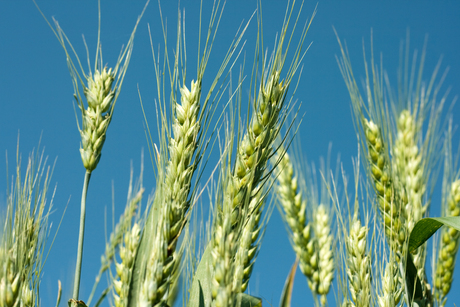Grains exports could rise 20% by 2030

The expanding middle class in Asia could result in an increase in Australia’s wheat exports income from $5.7 billion to $7 billion by 2030. This 20% increase reflects the growing demand for grain, red meat and dairy in Asia and could transform the Australian grain industry according to new research by ANZ.
The grains-focused report, The Grains Muster, says that while human consumption of grain is significant and has increased globally, future prosperity of the Australian grain sector will be bolstered by two key drivers: the drought in Australia reducing the ability to support grass-fed cattle and a dramatic increase of people in Asia shifting their diets to consume red meat and dairy.
In order to achieve an aggressive growth scenario, the report states Australia would need to increase wheat production by 20% from 25 to 30 million tonnes over the next 14 years.
ANZ Head of Agribusiness Mark Bennett said: “Unprecedented growth in demand for animal and dairy protein in China and South-East Asia has the potential to transform our grains industry over coming years.
“Historically our growth momentum has come from improvements in productivity, and producers will need to continue to find efficiencies in their operations wherever they can. One area with huge potential for production is the likely redirection of global capital flows into Australian agriculture with an expected increased focus on cropping operations,” Bennett said.
Key findings:
- Australia could increase wheat production by 20% from 25 to 30 million tonnes, which would see the sector generate an additional $1.3 billion in export income by 2030, from $5.7 billion to $7 billion.
- Australia currently produces around 25 million tonnes of wheat, 18 of which is exported.
- A key driver of grain demand in China and South-East Asia is wheat-based food production, namely noodles, breads and bakery.
- The growing demand for animal protein in Asia, namely meat and dairy, can directly and indirectly impact the feed complex and Australian grain use.
- Recent free trade agreements in key North Asia growth markets have improved Australian grain farmers’ access to around 70,000 food consumers and 4.8 million livestock per Australian farmer.
- Seasonal conditions in Queensland and Northern NSW mean there has been an increasing need to finish cattle on feed in feedlots to ensure quality and consistency, which has seen a significant increase in local demand for grain.
- Australians currently consume around 2 million tonnes of wheat each year and in China more than 50% of its 1.4 billion people consume flour-based foods.
“Infrastructure investment remains vital to drive efficiencies in the supply chain; however, it may not be the right place to look for the big impact on profitable grain production.”
ANZ General Manager of Regional Business Banking Christine Linden said: “Australian wheat enjoys an excellent reputation in global markets, but it appears that this ingredient, and the resources required to produce it, may be in higher demand than ever due to the global call for more animal protein.
“While this is clearly encouraging for Australian agribusiness, we cannot forget the flow-on benefits this shift will create for regional communities. Regional and rural Australia is at its best when agribusiness is strong, with buoyed regional commercial confidence driving improved economic and social conditions in the bush.”
Eggless muffins using clean-label texturiser
Bakery solutions specialist Lasenor Emul, S.L. has crafted muffins with 50–100% less egg...
DNA base editing could enable better probiotic strains
Thanks to DNA base editing technology, researchers have created a strain of...
Tree sap: a plant-based gelatine alternative?
Researchers from the University of Ottawa may have found a new plant-based alternative to...











